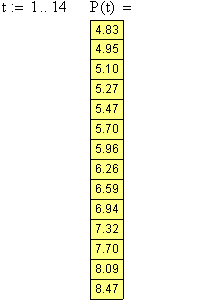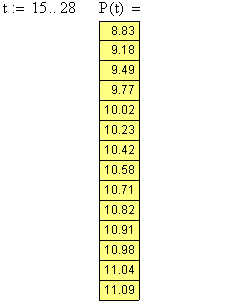For comparison, suppose that we had started with a known rule, given by, say, an equation:
![]()
We could then generate a table of values by plugging in various values of t :

Since we know the rule, we could also generate "future" values:

These aren't really "future" values, of course, since all of the values are described – compactly – by the rule of the equation. The equation generates any value we want, right now. It knows the "future" and the "past" right here in the present. It's the larger rule of which these tables are only a part.
|
|
|
|
| Back to Contents | ||